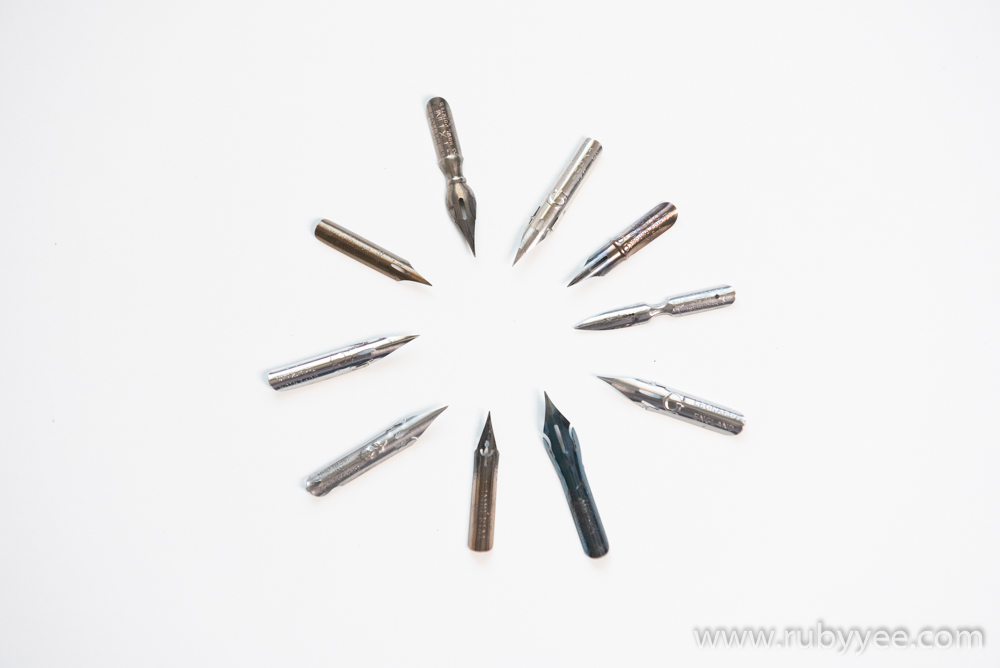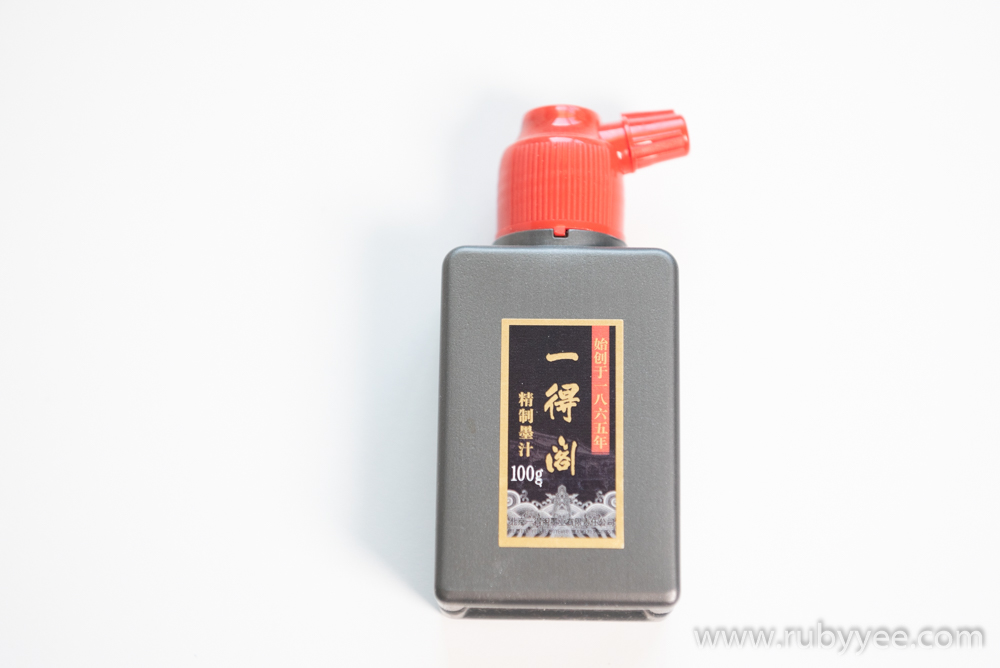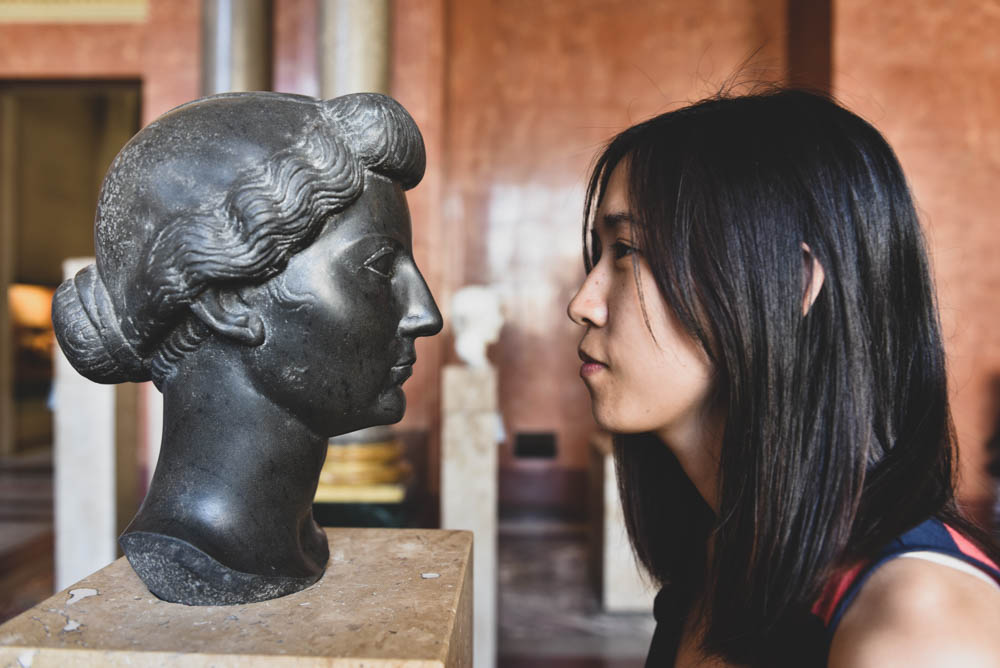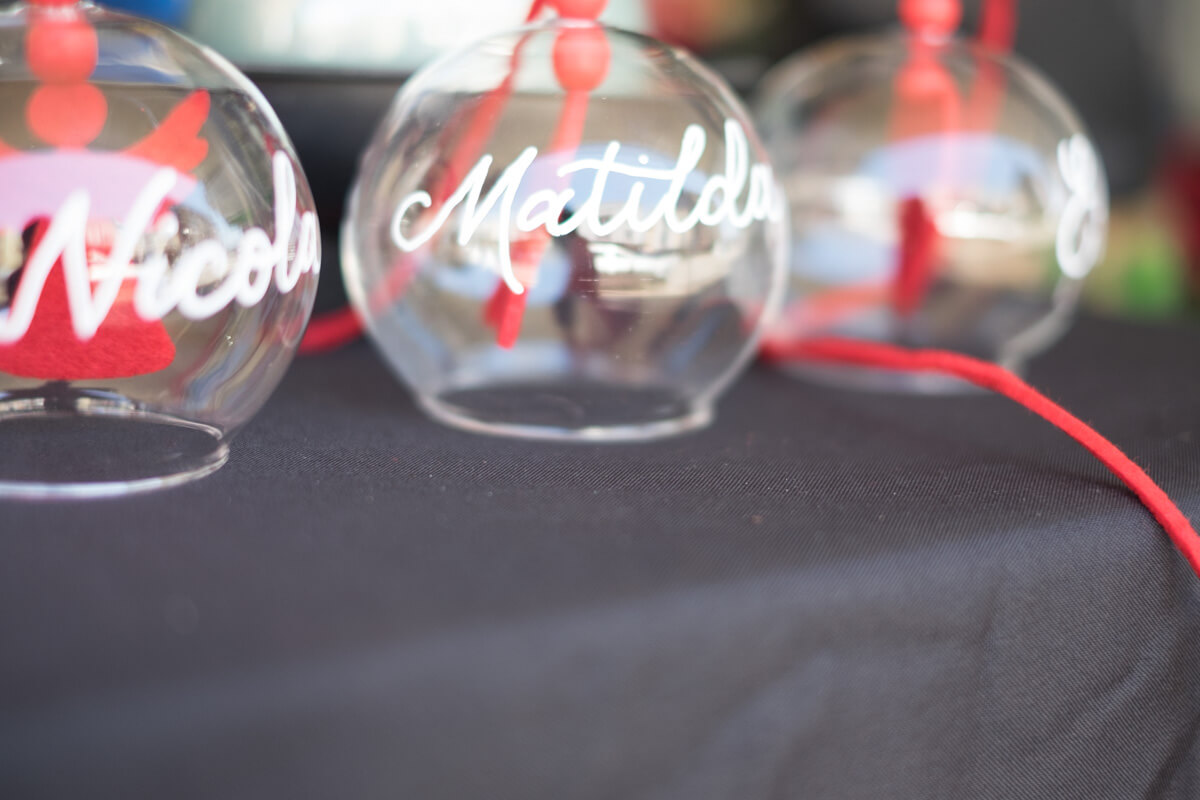Two most common misconceptions about calligraphy:
1. I have bad handwriting; and
2. I can’t because I’m left handed.
HAH! No, sorry, but those won’t fly. Calligraphy and lettering have nothing to do with pretty handwriting. You’re not actually writing letters; think of it as drawing instead.
As for point number two, I used to think the same way about being left handed and doing calligraphy, but I gave it a shot one day in 2015 and I’ve been loving it since. If you’re left handed and you can draw a stick figure, you can do calligraphy. If you’re right handed – well, aren’t you fancy?
How to get started
Don’t even try starting with the alphabet, you don’t need that yet. What you want to do is to practise the basic drills. Even before that, though, you’ll need your supplies.
Decide whether you’d like to do pointed pen, or brush calligraphy…or both! Oh, or even iPad calligraphy.
Let’s start with pointed pen: pick a nib, and nib holder and some ink.

Pen holders
Decide whether you would like to use a straight holder, a left oblique, or a right oblique holder. I kind of switch between a right oblique and a straight holder, but only because I can’t make up my mind. Lefties have an advantage in that the way we write puts the nib at the 55° slant required.
I have a million nib holders after years of hoarding, but you only need one and I suggest the Luis Creations 2-in-1. This one lets you choose between right oblique and a straight holder. If you’re looking for a lefty oblique, the selections are a little more limited. You can get them custom made (mine is from garagewoodworkingjp), or go with the Speedball oblique (the one on either end of the photo) even though the nibs don’t sit quite right in the holder.

Nibs
Nibs, nibs, nibs galore. There are so many nib options out there and everyone has their favourite one(s). The ones I’ve found the easiest to work with as a beginner is any of the G nibs, Zebra, Tachikawa, and Nikko. Most people love the Hunt 101, but I could never get it to work and preferred the Hunt 22. The Brause Sténo 361 (Blue Pumpkin) nib is also great for beginners as it’s not as pointy as other nibs so doesn’t catch on the fibres of the paper as easily. Your best bet is to just try a bunch and see which one(s) you like. Lucky they’re relatively cheap.

Ink
Sumi ink. the only ink you will need as a beginner. Just find whatever is the cheapest one. You can buy them from Daiso. If you have some watercolours handy, you can also give those a whirl, but $2 sumi ink is all you’ll ever need.
Paper
Most regular printer paper will work fine, though some of them will bleed. Rhodia paper is beautiful and smooth and easy on the nibs, but not really necessary, especially in the beginning.
Where to buy
Online
In-store
Brush calligraphy next time!






0 Comments